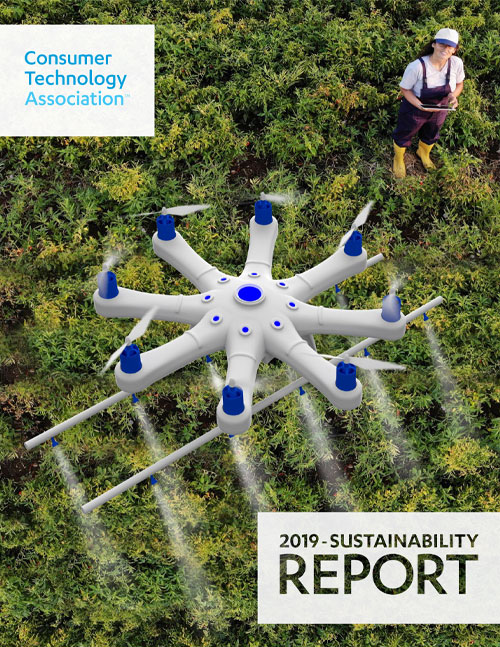Water
Conservation
In the World Economic Forum’s 2019 Global Risks report, water slipped down to number nine as a top risk most likely to occur in the near future, but only behind related risks of extreme weather events, natural disasters, man-made environmental disasters, failure of climate change mitigation and biodiversity loss. Any of these higher-rated risks can tip the balance on water availability and quality around the world, particularly for regions already suffering from shortfalls. For the technology industry, water presents a significant and material risk, given its use in nearly every manufacturing process. Not only are companies looking at how to mitigate their water use, they are also working to return water back to communities in a clean state and identifying new ways of reusing it endlessly within the manufacturing process through byproducts.
At Facebook, all the water used for landscaping at its two new 500,000-square-foot buildings is filtered from kitchen faucets, sinks, showers and toilets. The low-energy system uses physical, microbiological and oxidative treatments to make the water safe for reuse in landscaping, creating a loop and minimizing the need for extracting new clean water. Annually, the system is expected to process over 60,000 cubic meters (or 16 million gallons) of water.


Intel
Intel, which manufactures semiconductors requiring significant use of water for its fabrication process, has invested more than $254 million in water conservation projects at its global facilities since 1998. To date, the efforts have saved about 64 billion gallons of water, enough to sustain 580,000 U.S. homes for one year. In 2017, Intel upped its ambition by announcing that it would aim to restore 100% of its global water use by 2025. In 2018, Intel returned or restored 80% of its global water use and is on track to meet its 2025 goal.
Panasonic
Panasonic, which also has a significant manufacturing footprint, has reduced the total amount of water consumed in production activities by more than half since 2010 and water consumption per basic unit of production by 40%. Similar to Facebook’s approach, it collects and reuses wastewater from manufacturing processes and air conditioning systems endlessly in a loop. This reduces water intake as well as the amount of effluents from the production process.

Zero Mass Water
For Zero Mass Water, water conservation is built into its purpose. Using technology, Zero Mass Water created Source, a residential solar power array that uses sunlight to harvest water from air vapor. The harvested vapor is then sterilized, mineralized and stored in a reservoir that connects to home faucets. Since launching in 2015, the company has installed these panels, which can deliver four to ten liters of water every day, in 30 countries on six continents.

